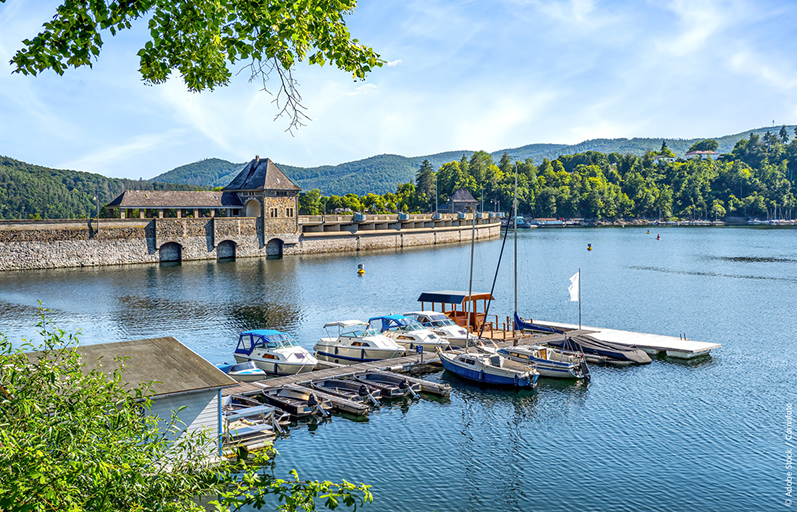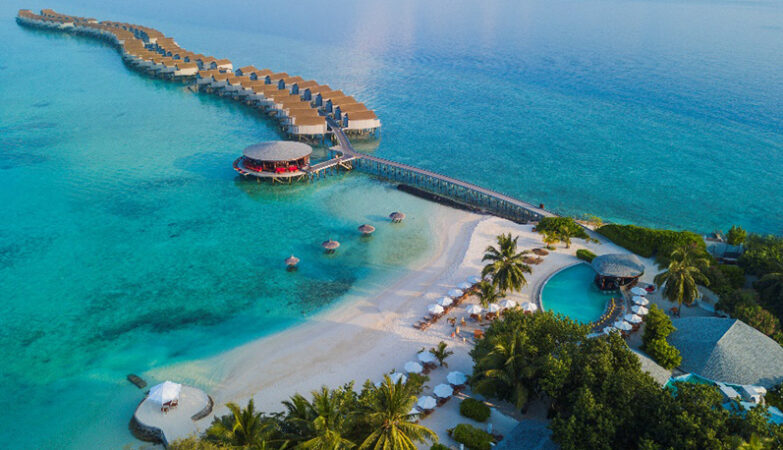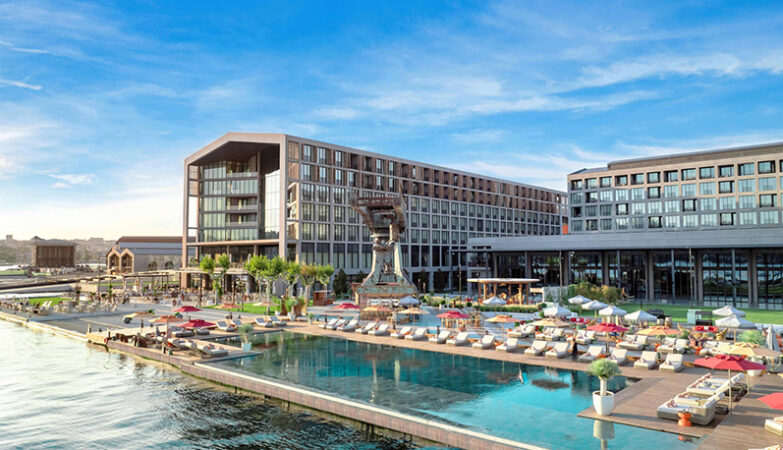From island hideaways to tranquil lakes, Germany offers refreshing summer experiences for GCC travellers
Images library:
Dubai, 20 May, 2025: This summer and Eid, the German National Tourist Office (GNTO) invites travellers from the GCC to experience the cooler side of Europe through Germany’s lesser-known yet captivating destinations. From the windswept islands of the North Sea to tranquil inland lakes and remote coastal hideaways, “Unseen Germany” reveals refreshing new possibilities for summer holidays far from the heat.
These hidden gems offer respite from soaring temperatures and a unique glimpse into Germany’s rich landscapes, culture, and hospitality.
Island Escapes: Breezy Adventures and Coastal Calm
Germany’s coasts are home to an array of islands that each offer something special:
- Rügen, Germany’s largest island, is renowned for its dramatic chalk cliffs, vast national parks, and elegant seaside resorts like Binz and Sellin. Travellers can take the nostalgic Racing Roland steam train, stroll the historic piers, or enjoy panoramic views from the Königstuhl cliff. Rügen’s diverse offerings, from family-friendly beaches to outdoor theatre at the Störtebeker Festival, make it an all-in-one destination.
- Sylt, often called the “Queen of the North Sea,” is beloved for its 40 kilometres of sandy beaches, luxurious spa towns, and excellent facilities for sailing and golf. With protected dunes, high-end wellness retreats, and excellent dining options in resort towns like Westerland, Sylt delivers both relaxation and refinement in a wind-sheltered setting.
- Föhr, nicknamed the “Frisian Caribbean,” offers verdant countryside, 15 kilometres of sandy beach, and rich Frisian traditions. Visitors can immerse themselves in the island’s heritage at the Frisian Museum or enjoy leisurely beach days and water sports. The ferry journey alone, passing the Halligen islands, is a scenic start to a peaceful getaway.
- Amrum is a dream for nature lovers. Located within the Schleswig-Holstein Wadden Sea National Park, its expansive Kniepsand beach and shallow mudflats provide a striking backdrop for birdwatching, kiteboarding, and guided mudflat walks.
- Heligoland, with its dramatic red sandstone cliffs rising from the North Sea, feels like another world. Heligoland is home to rare seabirds and friendly seals on the neighbouring Düne Island. Its untouched beauty and clean air make it ideal for wellness-oriented travel.
- Hiddensee, a car-free haven just off Rügen’s coast, blends sandy beaches with artistic flair. Long a retreat for German writers and creatives, the island features pine forests, salt marshes, and cultural institutions like the Gerhart Hauptmann House. Horse-drawn carriages, cycling paths, and sea buckthorn specialities add to the charm.
- Juist, known affectionately as “Töwerland” (Magic Land), offers a 17-kilometre stretch of pristine beach and a commitment to becoming carbon-neutral by 2030. The island’s calm pace and car-free environment are perfect for families and wellness travellers.
These islands offer cool temperatures, salt-tinged breezes, and experiences that range from thalassotherapy and hiking to maritime culture and environmental discovery.
Naturally Cool: Lakes, Waterfalls, and Riverside Retreats
Germany’s inland regions also promise rejuvenation and outdoor adventure with their one-of-a-kind swimming spots, and nature escapes:
- Pulvermaar, in Rhineland-Palatinate, is a volcanic crater lake that dazzles with its near-perfect circular shape and crystal-clear waters. As one of Germany’s deepest natural lakes, it offers idyllic swimming, sailing, and fishing in a peaceful forested setting.
- The Isar River in Munich is a favourite for locals and visitors alike. Along its banks, sunbathers, swimmers, and families enjoy the cooling waters just minutes from the city centre, ideal for combining urban exploration with riverside relaxation.
- On Usedom, the Achterwasser Lagoon lies between forest and sea, offering tranquil waters perfect for swimming, kayaking, and birdwatching. With fewer crowds and mirror-like stillness, it’s a peaceful family choice.
- Geroldsau Waterfall, hidden in the Black Forest, invites wild swimmers into its turquoise pool beneath cascading falls. It feels like a natural sanctuary, just minutes from Baden-Baden’s thermal spas, surrounded by rhododendrons and dense woodland.
- Lake Constance, one of Europe’s largest lakes, stretches across southern Germany and borders Austria and Switzerland. It’s dotted with charming lakeside towns like Lindau and Meersburg, offering historic bathing spots, boating, and panoramic alpine views.
- Schluchsee, at 930 metres above sea level in the Black Forest, combines invigorating mountain air with warm water and hiking opportunities. Families can relax on natural beaches or paddle through scenic inlets while enjoying mild summer temperatures.
For Beach Lovers: Where Sand, Sea, and Silence Meet
Germany’s beaches offer diversity, from lively resorts to secluded stretches of sand:
- Usedom’s main beach, stretching over 42 kilometres, is among the longest in Europe. Lined with classic seaside architecture, it caters to families, sunseekers, and walkers alike, while its historic resort towns recall 19th-century grandeur. The island is uniquely divided between Germany and Poland, offering a rich blend of cultures and landscapes, making it a distinctive cross-border holiday destination.
- The Darss Peninsula, part of the Western Pomerania Lagoon Area National Park, is known for its wild, wind-shaped trees and rugged beaches. This remote destination is ideal for travellers looking to disconnect and enjoy unspoiled nature.
- On Helgoland’s Düne Island, visitors may share the white sand with seals and grey seals, who sunbathe just metres away, an unforgettable experience for children and nature lovers.
- The Edersee, a 27-kilometre-long fjord-like reservoir in Hesse, offers sandy shores, water sports, and forested surroundings. Adventurers can kayak, hike, or take in views from Waldeck Castle towering above the water.
Cultural Hubs in a Summer Mood
Beyond natural escapes, Germany’s cities come alive in summer with open-air festivals, riverside promenades, and rich cultural experiences. Berlin, the capital of creativity, invites visitors to explore its world-class museums on Museum Island, family-friendly parks, and bustling markets. With its scenic harbour and Elbphilharmonie concert hall, Hamburg blends maritime charm with cultural flair. In Munich, summer means strolls through royal gardens, art galleries, and refreshing breaks along the Isar River.
Yamina Sofo, Director of the Marketing & Sales Office – GNTO GCC, commented: “Germany’s summer offering goes far beyond city tours and historic landmarks. This season, we invite GCC travellers to discover a quieter, cooler side of our country, filled with natural beauty, welcoming communities, and immersive outdoor experiences. Whether swimming in a volcanic lake, a bike ride through a car-free island, or a wellness retreat in the North Sea breeze, these hidden gems are made for summer and Eid travel.”
With increased direct flights from the GCC to key German cities, family-friendly infrastructure, Arabic-speaking staff, and Halal dining options across the country, these lesser-known destinations are more accessible than ever.
To discover Germany’s breathtaking natural landscapes and start planning your next escape into the great outdoors, visit the official Embrace German Nature campaign microsite: https://www.germany.travel/en/campaign/embrace-german-nature/home.html











